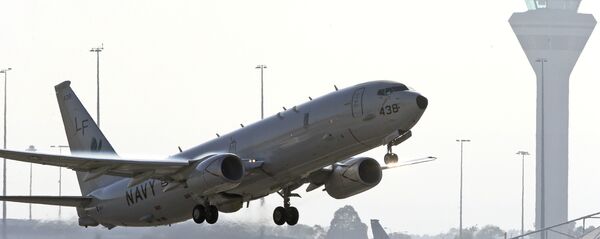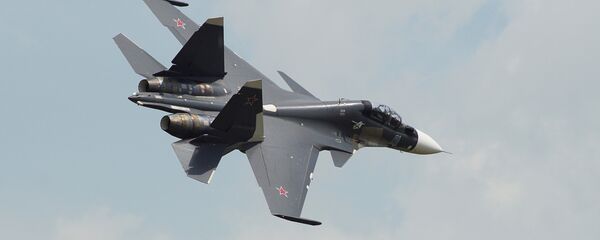The Navy announced that the two bombers were on their way to Oahu, where Patrol Squadron VP-4, also known as the "Skinny Dragons," is now temporarily deployed on a rotational basis.
"A pair of Poseidon surveillance planes are set to arrive in Hawaii this week, the first time a P-8 detachment has deployed to Oahu for maritime-security missions, the Navy said Thursday," reads a Stars and Stripes report.
Stars and Stripes is playing coy by calling the Poseidons "surveillance" planes, and while Poseidons do carry an arsenal of different radars and sensors, their primary task is killing ships and submarines.
The Poseidon is essentially a "militarized" version of a Boeing 737 passenger jet, according to the US Navy.
"It is capable of carrying of five missiles, depth charges or torpedoes in a rotary launcher in the rear hull, and six more on underwing racks," according to the National Interest.
The plane's sophisticated sensor arrays can even be used for jamming or as a cyberwarfare platform. It has its own acoustic sensor and a hydrocarbon sensor that can literally "sniff" submarine fuel vapors from the atmosphere.
However, the Poseidon lacks the magnetic anomaly detector, or MAD, which is the primary way to detect submarines when flying at low altitudes. The MAD detects minute influences in the Earth's magnetic field created by submarines, which are several-thousand-ton pieces of magnetic iron and steel. There are a number of explanations for such an exclusion, but none explains why the Indian-export version still has MAD onboard but the American version does not. Regardless, the Poseidon is designed to work in conjunction with a drone that can be equipped with MAD and send its readings back to the plane.
The two bombers arriving at Hawaii are assigned to the VP-4 patrol squadron, a World War II-era squadron with a lengthy list of military and rescue operations.
The Skinny Dragons operated from Oahu throughout the Cold War. The squadron has undergone Poseidon training at Whidbey Island, Washington, since October 2016. Now the squadron is stationed at Oahu in accordance with rotary deployment doctrine.




